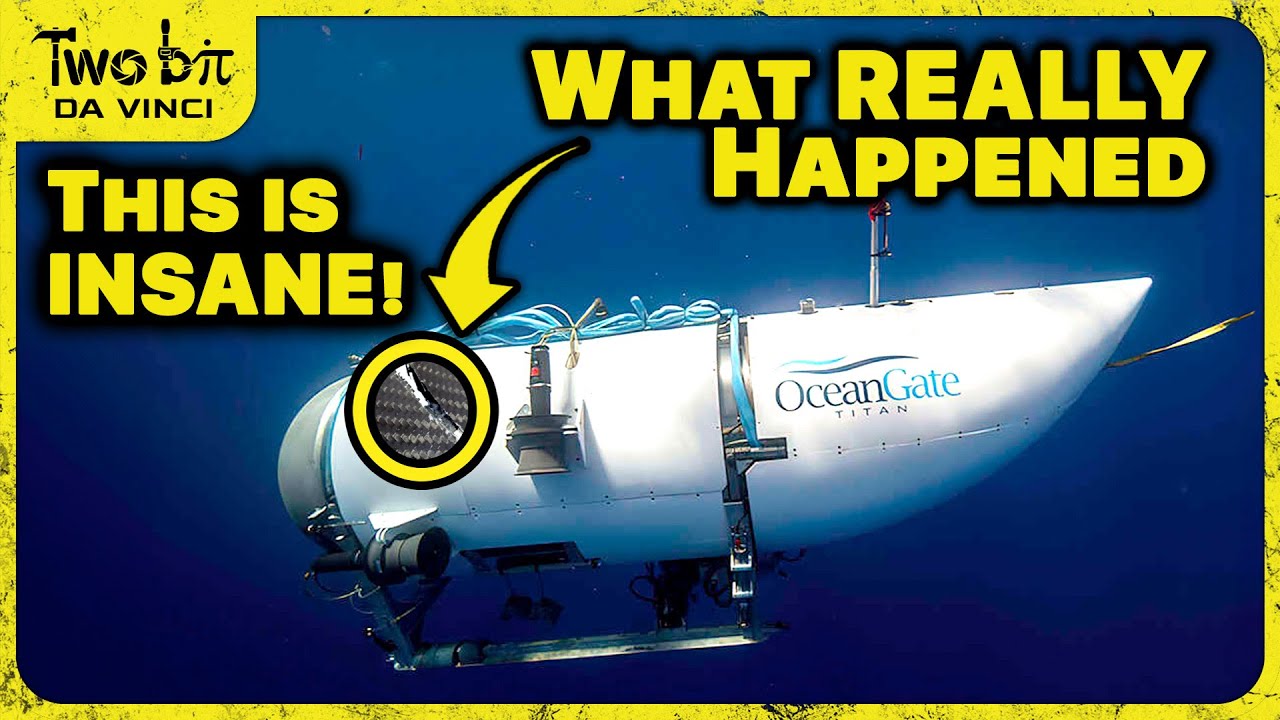Been thinking a lot about design and engineering – I come from a design background (initially more product and design realisation/design technology at school, then moved into graphic design later as it used my art skills more). My dad was an engineer also, so was brought up tinkering with things.
The Titan sub is a case in point (I am also a shipwreck/disaster geek and a Titanic stan so this is totally my ballpark). The idiots who designed that not only ignored the section on materials and direction of forces at school – they also did not design any redundant tolerances in. It was designed for a max depth of 4,000m. Titanic is 3,800m. Danger, Will Robinson, Danger!
Other submersibles quite rightly double or triple that max depth so to make sure there is wiggle room and safety. They used to build things to actual usage tolerances (say 1x or 1.5x weight of loading on a bridge or building floor)…then someone installs a nightclub on the 3rd floor* then they exceed the max occupancy or drive tanks or heavy lorries over it. Or there’s a freak storm of a century from a weird direction.
Pancake time. Not pretty. Safety regulations are build from blood, and that’s now very true in the previously 100% safety record in the deep submersible industry (not military submarines, quite a few of those have been lost, even imploded).
So nowadays it’s common to at least design 2x but usually these days it’s 3-4x the max load/pressure or whatever the expected force is. Just in case. This is not what Stockton Rush did, cos safety is for wimps. Dick. We will see more of these Elon Musk, Jeff Bezos and Steve Hoffman types trying to ‘disrupt’ industries by cutting corners and going against safety rules and traditional ways of doing things because ‘we know better’. I do hope they meet the same end, it’s a classic hubris tale. Sadly they might take the rest of us with them…
That’s without getting into the window that was officially rated for 1,300m, which might have been OK with testing, but without it’s total side-eye time. I doubt it was the acrylic or titanium that failed – especially when you can visibly see cracks developing in the window – but we’ll see. Looks like they recovered part of the control units so might be able to get data.
BTW carbon fibre is like wood, it has a grain of fibres in the laminate, so really strong one way edge onto the fibres, but brittle with torsion or bending the other way – this is why carbon fibre trekking poles are strong with downward forces as you lean on them, but trip over one or bend it too far, it shatters…
So if it had been a sphere and all carbon fibre in the pressure bell, it might have survived fine. Sure, delamination and cracks might still have formed, but if they replaced it every 5/10/15 deep dives AND properly tested what the max safe reuse levels were before cracking, it might have been OK The issue is partly not having a contiguous – i.e. all in one piece material, the sub was a composite of various materials. And having a tube with ends means the forces are going all kinds of directions, and I hate to think how they bonded the titanium end caps onto the carbon fibre. Glue apparently. *wince*. So pressure might have just forced the ends off, like pushing a tube of Smarties.
So maybe not a suitable material, but basically this disaster is a combination of bad design + questionable material choices + bullheaded ignorance of safety and industry practice. I mean a warning that the hull is cracking does not help you at 3,800m cos you have seconds prior warning, whereas it takes far longer to react and ascend.
And I could go on – people focus on the hull, but not having an inbuilt navigation system and relying on the ship above for guidance with a connection that apparently failed a lot…just seems crazy to me. Also not having a transponder beacon in case they are lost, as we thought originally. These don’t add much weight, it’s strange they built in so many ways to ascend if trapped, but not a way to get out if on the surface.
One of the big things about the nearly 7 million dollars (!) spent finding them – which is in stark comparison with what happened to a immigrant ship that sank in Greece the same day killing hundreds which didn’t get the 24 hour press treatment – was that even if they did surface, they couldn’t get out as they were bolted in. Again, bad design.
I have to say I personally agree with relatives of those who were lost on the Titanic, that any commercial tourism to what is a mass grave site of almost 1,500 people is wrong. Research yes, but OceanGate were doing a mixed tourism/research thing, and to be honest I’ve seen little research bar some photos and video. It did seem more like rich men’s toys than anything serious.
Marine superstition dictates you are respectful of these sites, which might seem like woo to some, but these superstitions have basis in reality. Sailors and divers know to respect the wreck sites because they are dangerous, and respecting the dead there means you also respect the risks you are taking, lest you join them. I don’t get that from any of the interviews with Stockton Rush. I think this disregard for the dead and the risks meant that 111 years later, 5 more dead joined the souls resting there.
This also goes to water bottles and ice cubes…bear with me as I take a related detour.
The pressures of capitalism to differentiate and add pointless/useless features leads to bad design and bad usability. Your water bottle might be safe, it won’t implode most likely but we know the optimal designs for a water bottle – cap, bottle, done. This has been designed over thousands of years, ignore the tradition at your own peril.
But no, they have to invent all kinds of fancy drinking ‘features’ that leak or don’t work – like the ones with internal straws that really need the bottle to be eternally full to get more than a micro-gulp. Or weird closures that leak all over your bag cos it’s fiddly to close or they open up easily. They seem not to have not tested or researched the uses either like Stockton Rush!
Same with ice cubes. We know the optimum size of space for each cube – clue is in the name – and what works best re: getting them out. Sloped sides, or a round one – which isn’t as space efficient but easier to get out. But no, you’ll find ice cube trays with exotic pineapple shapes and the like which are impossible to get out. Capitalism and wanting to differentiate or cut corners spoils design – which is contrary to the usual mantra, that competition leads to better designs or safer ones.
It rarely does. You can’t reinvent the wheel, some try, and they sometimes meet the end of these five men. ‘Innovation’ should not be blind to safety nor the existing design principles without some serious research. Neither was seemingly done here.
*true case. Middle East I think? There were a quite few of them in the 1920’s and 30’s too in the West.


Leave a Comment! Be nice….